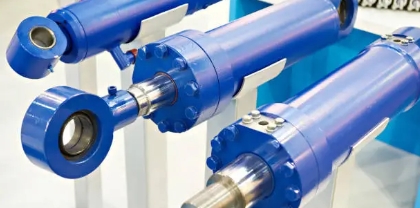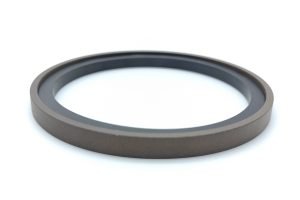Table of Contents
ToggleWhat is a hydraulic cylinder and how does it work?
A hydraulic cylinder is an equipment accessory with a liquid (usually hydraulic fluid) inside. The hydraulic fluid is pressed into the cylinder to generate tremendous pressure, and this energy is used in various mechanical equipment in industry. It can convert hydraulic energy into mechanical energy and carry out the hydraulic actuator’s linear reciprocating motion (or oscillating motion). It has a simple structure and works reliably. In the realization of reciprocating motion, hydraulic cylinders can save the deceleration device, but there is also no transmission gap and smooth movement. Therefore, it is widely used in the hydraulic system of various machines.
The hydraulic cylinder with oil as the working medium, through the hydraulic cylinder volume changes to transfer the movement, and through the oil internal pressure to transfer power. The output force of the hydraulic cylinder is proportional to the effective area of the piston and the pressure difference between its two sides.

Structure of the hydraulic cylinder:
Hydraulic cylinders mainly consist of cylinder barrels and heads, pistons and piston rods, hydraulic seals, buffer seals and exhaust devices. The specific configuration of the cushioning and exhaust devices depends on the application, while the other devices are indispensable.
To prevent oil leakage to the outside of the hydraulic cylinder or from the high-pressure chamber to the low-pressure chamber, it is necessary to use hydraulic seals of various functions, such as piston seals, piston rod seals, guide wear ring seals, etc., between the cylinder barrel and the end cover, the piston and the piston rod, the piston and the cylinder barrel, and the piston rod and the front end cover. In addition, the front end cap is equipped with a dust seal on the outside. To prevent the piston from hitting the cylinder head when it returns quickly at the end of its stroke, the end of the hydraulic cylinder is also equipped with cushion seals and, in some cases, an air venting device.
Cylinder: The cylinder is the central part of the hydraulic cylinder, and the cylinder head, piston and other parts constitute a closed cavity to promote the piston movement.
Cylinder head: the cylinder head is mounted on both ends of the hydraulic cylinder, and the barrel constitutes a tight oil cavity. Usually, there are welding, threaded bolts, key tie rods, and other types of connections, generally according to the working pressure, the cylinder connection, the use of the environment, and other factors to choose from.
Piston: hydraulic energy converted into mechanical power for the main components. Its effective working area directly affects the hydraulic cylinder force and speed of movement. Piston and piston rod connection has a variety of forms, including the commonly used ring type, sleeve type, and nut type.
Piston rod: The piston rod is the main component of the hydraulic cylinder force transfer. Materials generally choose medium carbon steel (such as No. 45 steel). Cylinder work, the piston rod by the thrust, tension or bending moment, etc., to ensure its strength is necessary; the piston rod is often in the guide sleeve sliding, so it should be suitable.
Guide ring: The guide ring on the piston rod plays a guiding and supporting role; it requires high precision, small frictional resistance, good wear resistance, and can withstand the pressure of the piston rod, bending force and shock vibration. It is equipped with a sealing device to ensure the sealing of the cylinder rod cavity and a dust seal on the outside to prevent impurities, dust and moisture from being brought to the sealing device and damaging the seal.
Cushioning device: The piston and piston rod have great pressure when they move under the hydraulic drive, and when they enter the end cover and the bottom part of the cylinder, they will cause mechanical collision and produce great impact pressure and noise. The use of cushioning devices is to avoid such collisions. Its working principle is to compress the oil in the cylinder barrel’s low-pressure chamber and release it slowly through the throttle hole to realize the cushioning effect.







